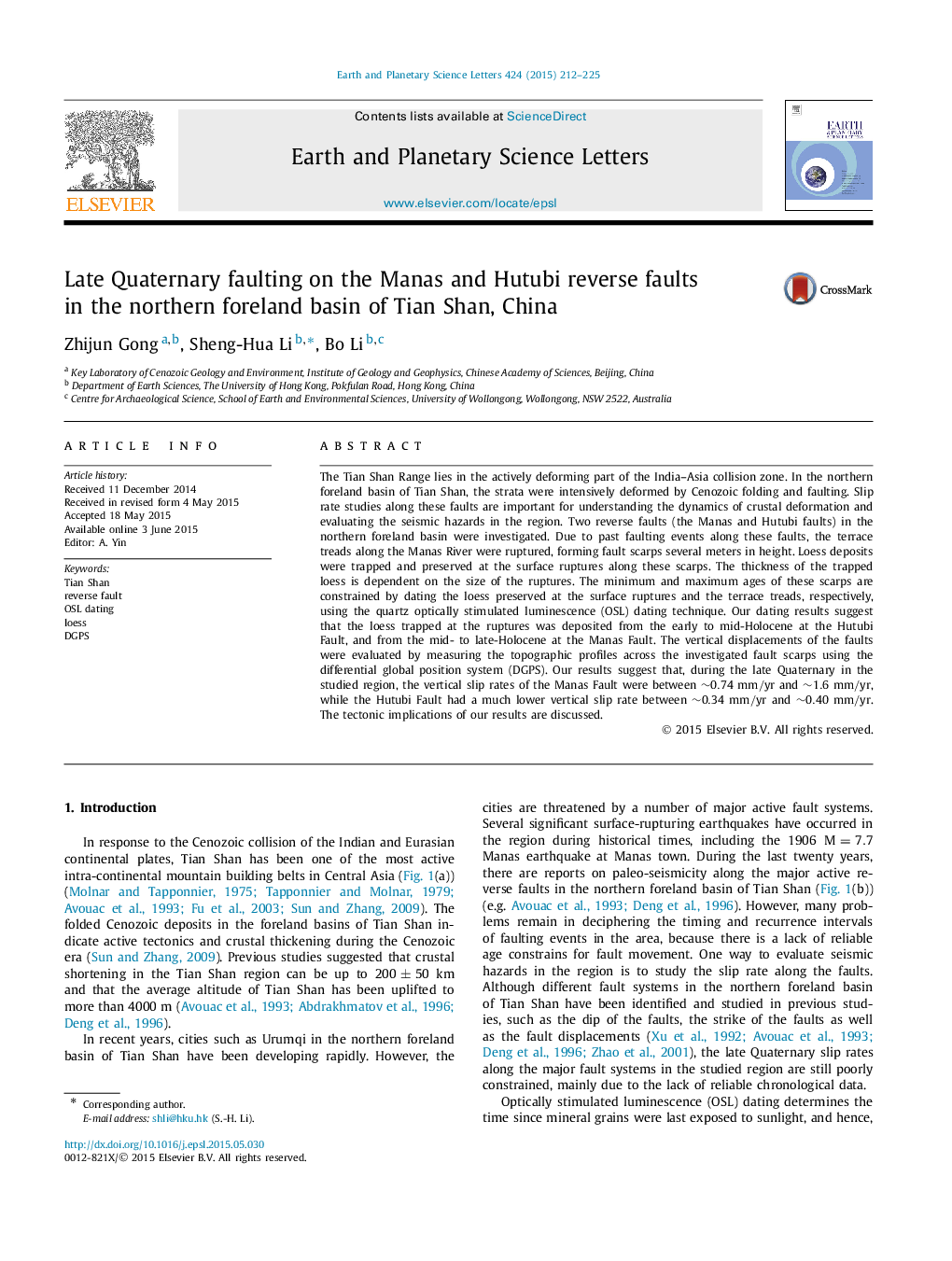| کد مقاله | کد نشریه | سال انتشار | مقاله انگلیسی | نسخه تمام متن |
|---|---|---|---|---|
| 6428240 | 1634732 | 2015 | 14 صفحه PDF | دانلود رایگان |
- Two reverse faults in the northern foreland basin of Tian Shan were studied.
- Loess deposits along the fault scarps were dated to constrain past thrust activities.
- The faults show different activities and slip rates during the late Quaternary.
The Tian Shan Range lies in the actively deforming part of the India-Asia collision zone. In the northern foreland basin of Tian Shan, the strata were intensively deformed by Cenozoic folding and faulting. Slip rate studies along these faults are important for understanding the dynamics of crustal deformation and evaluating the seismic hazards in the region. Two reverse faults (the Manas and Hutubi faults) in the northern foreland basin were investigated. Due to past faulting events along these faults, the terrace treads along the Manas River were ruptured, forming fault scarps several meters in height. Loess deposits were trapped and preserved at the surface ruptures along these scarps. The thickness of the trapped loess is dependent on the size of the ruptures. The minimum and maximum ages of these scarps are constrained by dating the loess preserved at the surface ruptures and the terrace treads, respectively, using the quartz optically stimulated luminescence (OSL) dating technique. Our dating results suggest that the loess trapped at the ruptures was deposited from the early to mid-Holocene at the Hutubi Fault, and from the mid- to late-Holocene at the Manas Fault. The vertical displacements of the faults were evaluated by measuring the topographic profiles across the investigated fault scarps using the differential global position system (DGPS). Our results suggest that, during the late Quaternary in the studied region, the vertical slip rates of the Manas Fault were between â¼0.74mm/yr and â¼1.6mm/yr, while the Hutubi Fault had a much lower vertical slip rate between â¼0.34mm/yr and â¼0.40mm/yr. The tectonic implications of our results are discussed.
Journal: Earth and Planetary Science Letters - Volume 424, 15 August 2015, Pages 212-225
